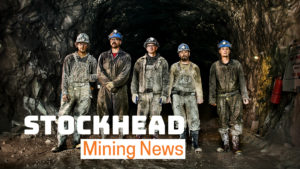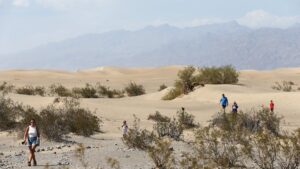Exploration at Reach’s White Castles is off to a great start with rock chips returning juicy 48% manganese hit

White Castles is emerging as a noteworthy manganese exploration project. Pic: via Getty Images.
- Rock chip sampling at Reach’s White Castles project returns up to 48% manganese
- Large contiguous project area with strike of over 50km following acquisition of tenement E09/2539
- Geochemical analysis will target the best parts of project for more sampling, detailed mapping
Reach’s assessment of its White Castles project in WA’s Edmund Basin is off to a great start with rock chip sampling returning assays of up to 48% manganese.
The 665km2 White Castles project area is ~80km from the company’s Morrissey Hill lithium project, where it has now mapped more than 50 pegmatites with a combined cumulative strike length of +10km.
White Castles is also bordered by mining major FMG (ASX:FMG) to the east and Dreadnought Resources (ASX:DRE) to the southeast.
Multiple surface manganese outcrops are present over 50km of continuous strike at the project though little to no exploration has been undertaken since 2010.
With manganese now recognised as a critical mineral in Australia due to its growing use in lithium-ion battery cathodes, Reach Resources (ASX:RR1) kicked off helicopter-supported reconnaissance rock chip sampling program in September as part of the due diligence process for acquiring the E09/2543 tenement from Firebird.
High-grade manganese rock chips
This rock chip sampling, which collected 91 samples from various outcrops, has now returned manganese results of up to 48%.
Geochemical analysis is yet to be completed though the company said it is encouraging to note low impurities within the samples.
“These high-grade assay results are a great start to the assessment of our White Castles manganese project,” chief executive Jeremy Bower said.
“We have deliberately targeted manganese as part of our battery metal strategy as we see the demand curve steepening in the coming years with the switch to alternative battery chemistries using manganese, over and above the baseload of demand from the steel industry.
“Following the recent acquisition of tenement E09/2539 from Firebird Metals, we now have a large contiguous project area with a potential strike length of over 50km and in a commodity that is just starting to get its time in the sun.”
Next steps
Bower says the company will now carry out a geochemical analysis and select the best parts of the project area for further sampling and detailed mapping.
“This will ensure that when we approach the traditional owners for the necessary approvals, we already have a good idea of our key target areas which will form the focus of early work programs,” he added.
This article was developed in collaboration with Reach Resources, a Stockhead advertiser at the time of publishing.
This article does not constitute financial product advice. You should consider obtaining independent advice before making any financial decisions.
Related Topics
UNLOCK INSIGHTS
Discover the untold stories of emerging ASX stocks.
Daily news and expert analysis, it's free to subscribe.
By proceeding, you confirm you understand that we handle personal information in accordance with our Privacy Policy.








